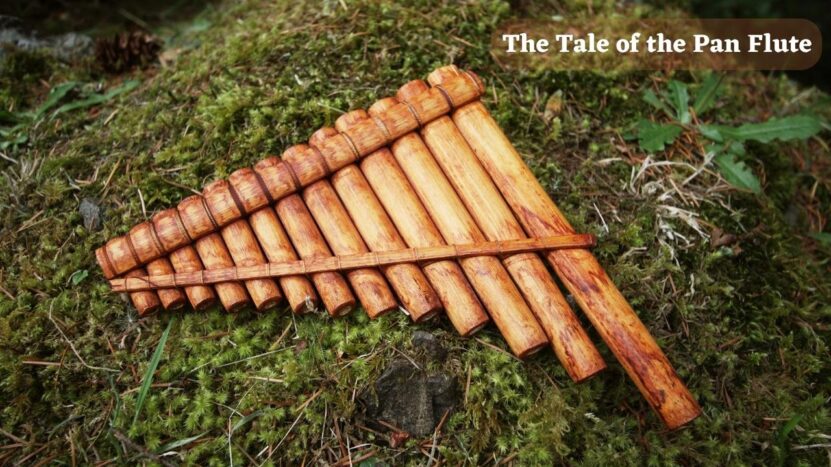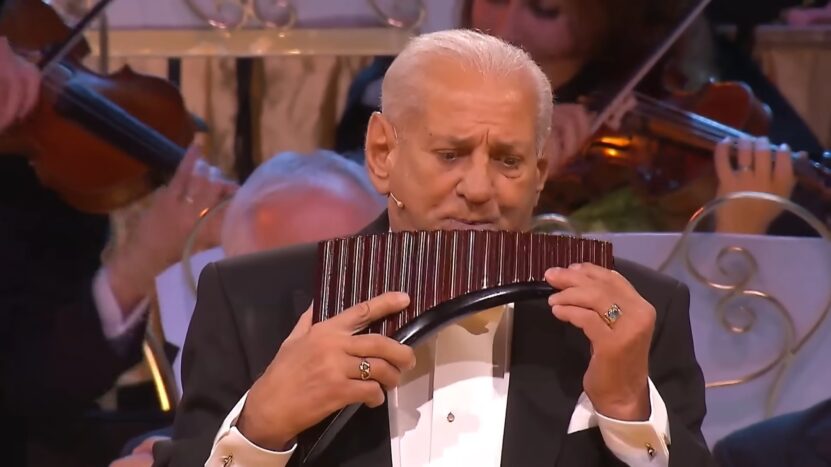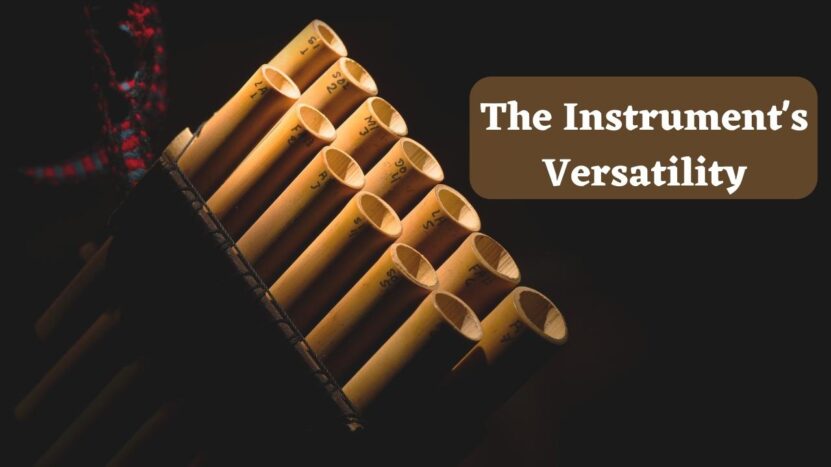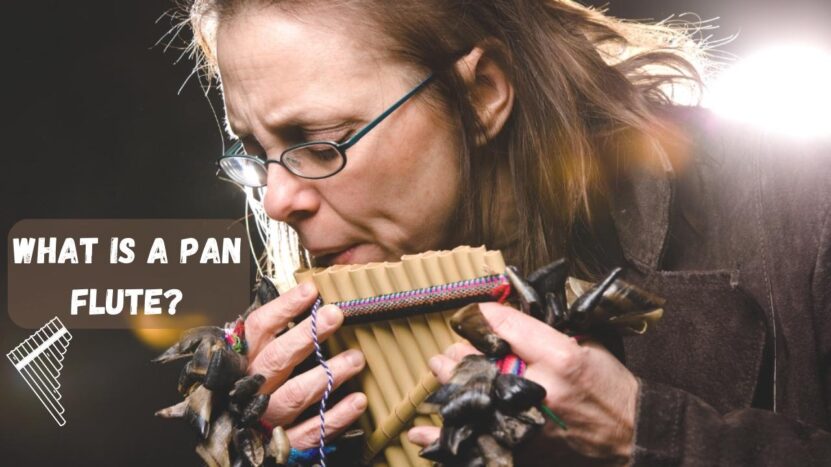Every once in a while, you encounter a musical instrument that resonates with your soul in an indescribable manner. It creates an enchanting melody that can transport you to a different place and time. The pan flute is one such mesmerizing instrument. This article will unfurl the musical tapestry of the pan flute, taking you on a journey through its history, structure, and the art of playing it.
The Tale of the Pan Flute

The pan flute, also known as panpipes, owes its name to Greek mythology, specifically to the god of nature and the wild, Pan. According to legend, Pan fell in love with the nymph Syrinx, who, to evade him, was transformed into a water reed. The winds blew through the reeds, producing a mournful melody that enchanted Pan. He cut reeds of varying lengths, bound them together, and thus, the first pan flute was born.
Over centuries, this instrument spread across different cultures and continents. From the Romanian nai and the Andean antara to the Polynesian nose flute, each culture has its version of the pan flute, adding unique characteristics while retaining the fundamental construction.
The Anatomy of the Instrument
The pan flute, in its simplest form, is a set of hollow tubes, each producing a different pitch. The tubes are bound together, either in a straight line or curved into a slight arc. The length and diameter of each tube determine the pitch it generates.
The classic version of this instrument has a diatonic scale, meaning it has eight notes like the white keys on a piano. However, modern pan flutes are often chromatic, including sharps and flats, similar to incorporating the black keys on a piano.
Each tube is stopped at one end, creating a ‘closed tube,’ which produces a resonant sound when the open end is blown across. This makes the pan flute a “free aerophone,” a classification in the Sachs-Hornbostel system that also includes instruments like the flute and whistle.
The Art of Playing It
Playing the pan flute might seem daunting at first, but it is a skill that can be learned with practice and patience. Mastery of this instrument requires finesse, as the melody is shaped not just by the note selection but also by the breath control, embouchure, and articulation.
Finding the Right Position
The first step to playing this instrument is to hold it correctly. Position it with the smaller tubes to your left if you’re right-handed and vice versa if you’re left-handed. The tubes should be tilted towards your bottom lip, with the open ends facing away from you. This positioning allows the air to flow across the tubes, producing sound.
The Role of Breath Control
Breath control plays a crucial role in the pan flute. You should aim to produce a smooth, sustained sound by controlling your exhalation. Start by practicing long, even breaths while maintaining a consistent volume. With time, you can develop techniques like vibrato, where you modulate your breath to create a pulsating effect on the note.
Articulation Techniques
Articulation in the pan flute involves shaping the sound using your tongue and lips. For example, you can use the ‘tah’ technique, where you articulate each note with a ‘t’ sound, giving it a sharper onset. Other techniques include ‘dah’ for a softer onset and ‘lah’ for legato or connected notes.
Famous Pan Flute Players and Their Impact

This instrument has seen numerous virtuosos throughout history who have left an indelible mark on the world of music. Some notable musicians include Gheorghe Zamfir, known as the “Master of the Pan Flute.” He gained international fame for his magical rendition of “The Lonely Shepherd.” Another notable performer is Simion Stanciu, who elevated the pan flute onto the classical music stage.
The Instrument’s Magic and Allure
The pan flute’s music, with its ethereal, breathy tonality, has a unique charm that can soothe, captivate, and transport listeners. It carries the whispers of the wind, the sighs of the reeds, and the heartbeat of the earth itself.
From the ancient Greeks to contemporary musicians, the pan flute continues to enchant with its simple design and complex melodies. It is more than just an instrument; it is a testament to our collective, cultural, and musical heritage.
Tradition and Craftsmanship

The construction of a pan flute is a fascinating process that requires meticulous attention to detail. Traditionally, the tubes are made from bamboo or reeds, chosen for their robustness and natural resonance. In modern times, synthetic materials like plastic and metal are also used.
Each tube is carefully selected or crafted to a specific length to produce the desired pitch. The tubes are arranged in a row, from the longest (which produces the lowest pitch) to the shortest (which emits the highest pitch). The tubes are usually tied together using cords or leather straps, though some modern versions may use other materials such as synthetic adhesive.
The process of making a pan flute is an art in itself. It requires the right selection of materials, precise measurements, and a deep understanding of the musical scales. Some master craftsmen even tailor their instruments to the player, creating a unique sound profile that matches the artist’s style and technique.
Pan Flute in Popular Culture
Despite its ancient roots, the pan flute continues to have a broad appeal, with its distinctive sound featured in various aspects of popular culture. From movies and TV shows to video games, the instrument’s ethereal notes add depth and emotion to the narrative.
For example, the pan flute’s melancholic tones can be heard in the soundtrack of the Oscar-winning movie “The Mission.” Its mesmerizing sound also provides a haunting backdrop in the video game “The Legend of Zelda: Ocarina of Time.”
The Instrument’s Versatility

While the pan flute is often associated with folk and traditional music, its versatility makes it a fitting choice for various music genres. Jazz musicians, for instance, incorporate this instrument to add a unique, airy tone to their compositions.
In addition, electronic and pop music has adopted the pan flute, blending its acoustic tones with modern synthesized sounds. This fusion has resulted in some hit tracks that showcase the instrument’s capacity to adapt and enrich contemporary music styles.
Learning Resources
If you’re interested in learning to play the pan flute, you’re in luck. There’s a wealth of resources available, from online tutorials to community music schools offering courses. Books such as “The Art of the Pan Flute” by Douglas Bishop provide a comprehensive guide for beginners.
An increasingly popular learning method is through video platforms like YouTube, where numerous experienced musicians offer free lessons. Websites dedicated to the pan flute, such as pan-flute.com, also provide useful resources, including sheet music, practice exercises, and community forums.
The Pan Flute’s Influence on Music Therapy

The soothing sound of this instrument is not only pleasurable to the ears but also has therapeutic properties. Music therapists often use the pan flute to help reduce stress and anxiety, promote relaxation, and improve mood. The instrument’s calming tones can have a profound impact on mental well-being, further attesting to the pan flute’s incredible versatility and timeless appeal.
Wrapping Up
The pan flute, an instrument born of love and longing, continues to thrive, casting a spell with its hauntingly beautiful music. Whether you’re a novice exploring the world of music or an experienced musician seeking a new challenge, the pan flute offers a rewarding and profoundly soulful experience.
If you’re interested in exploring the world of music and adding a unique charm to your melodies, you might want to check out our comprehensive guide on connecting a Guitar Hero guitar to Xbox One.

